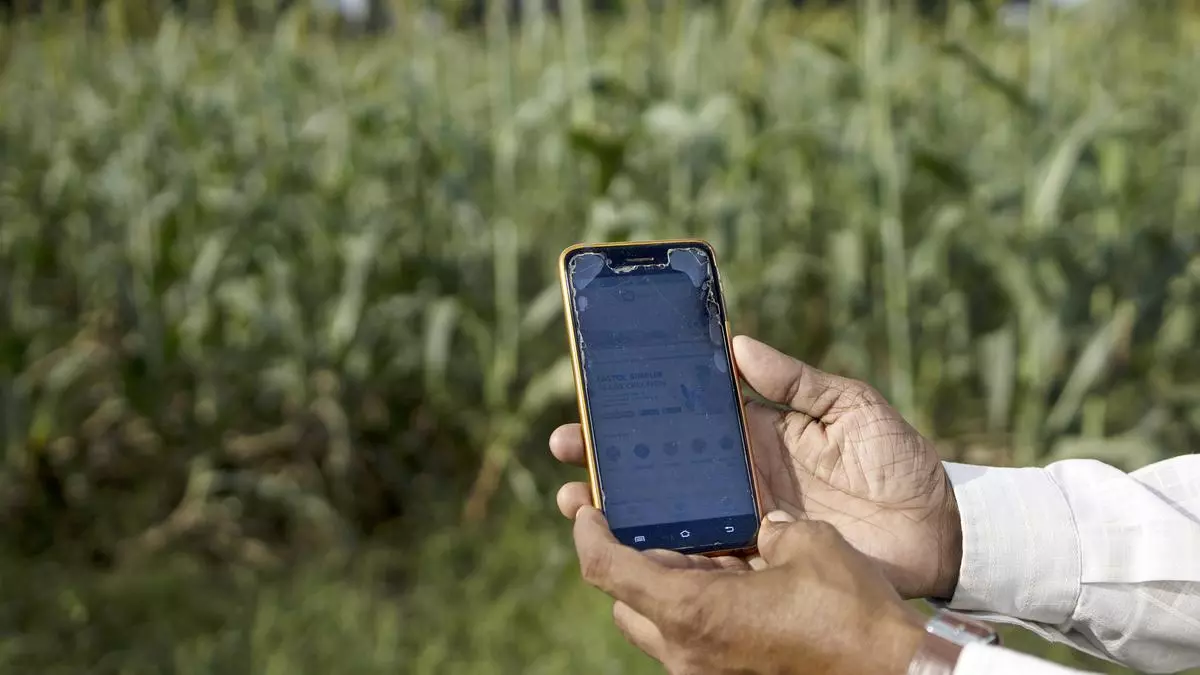What is it in the Digital Farm Mission?
The recently launched Digital Farm Mission (DFM), with an outlay of ₹2,817 crore, accounting for about 20 per cent of the total investment, ₹14,235 crore, is undoubtedly a welcome move to improve productivity, resilience of farming systems and attain environmental sustainability. The scheme has two foundational pillars: the Agri Stack and the Krishi Decision Support System.
The Agri Stack project will contain three core registries: (1) Farmers’ registry, (2) geo-referenced village maps, and (3) crop sown registry. Krishi Decision Support System will create a comprehensive geospatial map by aggregating crop, soil, weather, and water data for analysis and actuation.
So, it is an opportune time to conjecture the probable impacts of the Digital Farm Mission on agricultural ecosystems and explore how the mission can effectuate a networked development by orchestrating the roles of centers, states/UTs, technology start-ups, and market agencies to improve (information) governance, infrastructure and data sharing, reduce (operational) bottlenecks in public services delivery systems.
Probable impacts
A few central sector schemes and programmes as use cases are considered to decode the DFM would impact. These use cases include minimum support prices (price support scheme), PM Kisan, soil health cards, Kisan credit cards, and crop insurance programs (PMFBY). probable impacts of the Digital Farm Mission.
First, the service delivery of MSP-based procurement to farmers and procurement agencies comes to the fore. Agri Stack’s farmers’ registry, crop-sown survey registry, and geo-referenced village maps would help the government (centre and states) plan MSP targets and generate GIS-based optimal MSP procurement centres. It will give phase-wise expected arrivals and create a list of verified farmers eligible for the MSP-based procurement facility.
This digitised procurement system will reduce lead time for MSP-based procurement, spanning verification of farmer records, procurement scheduling, and payment processing from 22-23 days to 5-10 days.
Second, using the Agri Stack’s farmers’ registry and GPS-enabled coordinates of farmers’ landholdings, the PM Kisan scheme that provides farmer annual income support of ₹6,000 can reduce the inclusion-exclusion error and enhance farmers’ coverage from an average of 8.78 crores between FY 2018–19 and FY 2023–24 (till July) to 11 crores in FY 2025–26. A key question, however, needs to be answered that how this mission will include tenant and landless farmers to realize the scheme benefits.
Third, the soil health card (SHC) program will initiate a common digital form backed by multiple front ends for data entry, supported by Krishi Tantra, the Jio platform, and other service providers. Test results will be shared with the various switch integrations (APIs) of several soil testing service providers across states/UTs, and verifiable credentials will be supplied by farmers’ registry and land records. SHC’s backend, supported by blockchain-enabled smart contract as the Distributed Ledger Technology, will maintain SHC data and generate reports for sharing with the states/ UTs.
Fourth, Kisan credit card applications by farmers and bank sanctioning would be contactless and hassle-free. Agri Stack’s geo-referenced village maps and crop sown registry, and the Krishi decision support system-enabled satellite image-based screening as pre-sanction survey would follow digital credit history verification (historical) and bank business rule engine check, scale of finance check, and eligibility value computed. In short, electronic KCC or Jan Samarth KCC will be piloted in five states utilizing the data generated by the Agri Stack and decision support system.
Fifth, farmers’ crop insurance (PMFBY) programme registration, premium payment, insurance underwriting, and claim settlement processes will be real-time that will mitigate the moral hazards and adverse selection for the insurers and insured (farmers).
Unified farmers interface
Agri Stack’s three core registries will fructify the process from encouraging farmers’ crop insurance programme subscription, authenticating and verifying premium payment, and ensuring faster claim settlement based on locations-specific digital crop survey results. As crop insurance is voluntary for loanee and non-loanee farmers, banks or Fis can be ringfenced from commission charges on insurance premium collection as fee-based income. In other words, they can be the courage to focus on their core businesses.
Sixth, as the central government will share 68 per cent of the DFM budget and is expected to spend the amount by FY 2025–26, the 22 states/UTs which already signed MoUs with the centre should fast forward to create and maintain core registries of Agri Stack. This would accelerate the agricultural ecosystems and catalyze data interoperability through a unified farmers’ service interface utilising APIs.
Seventh, several agri-techs start-ups of different lifecycle stages have been harnessing the potential of digitalization in agricultural sectors spanning precision agriculture, uberization of farm mechanization, and farm to fork electronic traceability systems. So, the DFM should crowd-in their presence in making digital service delivery efficient and effective. In other words, the states and central governments through this novel mission must provide an enabling environment for start-ups, farmer collectives, and large corporates to bring a synergistic and trickle-down effects in agricultural ecosystems.
To sum up, the mission must improve digital services delivery and the digital capacity of smallholder farmers to achieve producers’ level goals, namely technical and allocative efficiencies and societal goals such as reducing policy-related transaction costs, attaining equity and environmental sustainability.
(Kushankur Dey teaches at IIM Lucknow. Views are personal.)
